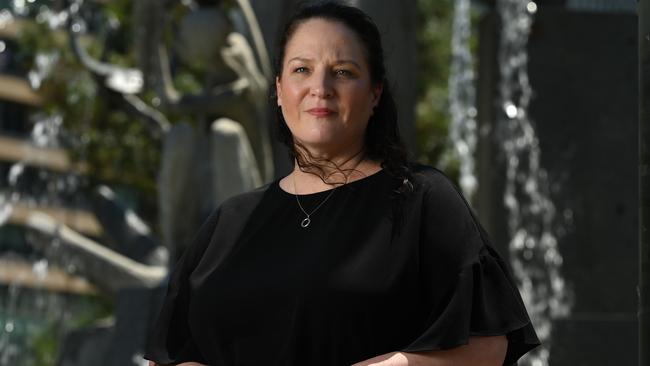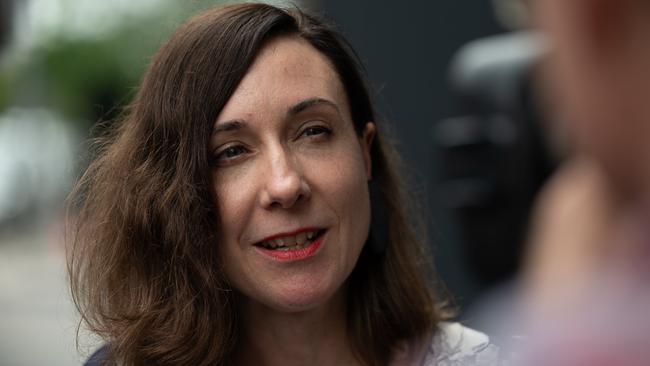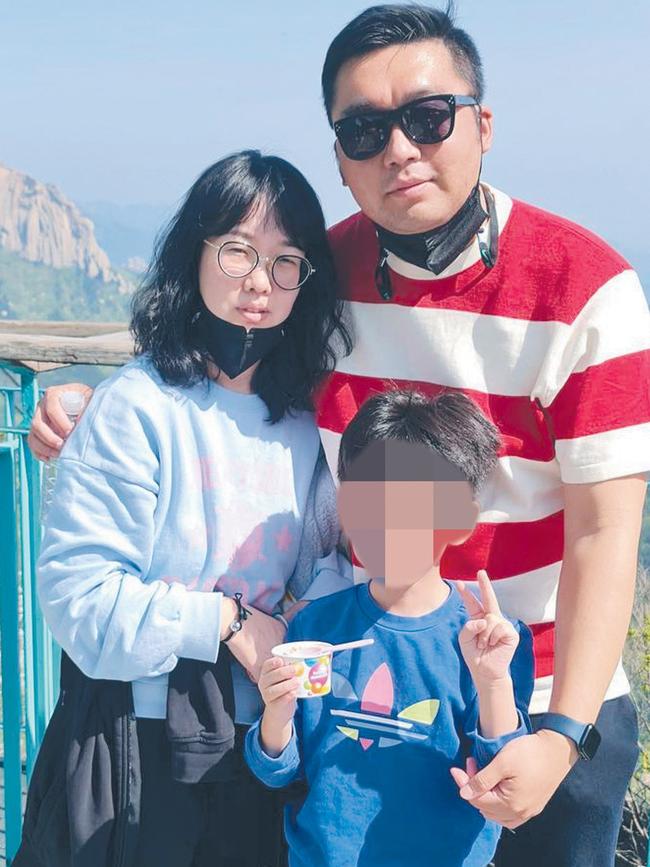Australian domestic violence deaths list reveals shocking truth
It’s the worst year since 2018, with one woman or child a victim every four days in Australia. So, why is the toll getting worse and not better in this country?
SA Weekend
Don't miss out on the headlines from SA Weekend. Followed categories will be added to My News.
Samantha Murphy, Molly Ticehurst, Hannah McGuire, Jennifer and Gretl Petelczyc.
Do you recognise these names?
They are just five of the mothers, daughters, girlfriends, wives and ex-partners who have allegedly died as a result of gendered violence so far in 2024.
In total, at least 80 Australian women and children have died violently, and in many cases men have been charged or suspected of causing their deaths.
Just go back and read that again – 80. That’s one death every four days.
It is the highest number of deaths since 2018, but the infuriating reality is the number is almost certain to rise before the year is done.
Today SA Weekend honours those lost to a worsening epidemic of gendered violence, from toddlers to women in their 20s through to their 80s.
Among the alleged victims are Victorian mother of three Samantha Murphy (whose body has not been found), New South Wales mum of one Molly Ticehurst, West Australian mother and daughter Jennifer and Gretl Petelczyc, Queensland mum of five Carolyn McCarthy, Tasmanian mum of two Alison Robinson, grandmother Wanda Dorothy Uhle from the Australian Capital Territory, a 42-year-old Warlpiri woman from the Northern Territory and mother and son Antoinette and Steven Tozer from South Australia.



The alleged perpetrators throughout 2024 include husbands, boyfriends, ex-partners, fathers, sons, neighbours, housemates and total strangers.
In some cases the killers took their own lives – like Mark James Bombara, 63, who shot Jennifer and Gretl Petelczyc.
Five of the women were killed during a stabbing rampage by Joel Cauchi through Sydney’s Bondi Junction Shopping Centre in April. CCTV footage appears to show Cauchi avoiding some shoppers and targeting women, before he was shot dead by NSW Police inspector Amy Scott.
In Queensland’s Lockyer Valley mother of three Frances Crawford’s husband has been charged with murder and misconduct with a corpse.
Wiradjuri woman and mum of two Mavis Stanley’s body was found naked and dumped on the side of the road near Bourke, in northern NSW.
While these shocking cases made national headlines, many deaths have gone largely unreported.

To Queenslander Sherele Moody, this is unacceptable. So for the past nine years she has dedicated countless hours to tracking police reports and fielding calls from the loved ones in an effort to publicly acknowledge every unlawful, violent death of a woman or child around Australia.
The result is the Red Heart campaign and online memorial, where Moody attempts to give dignity to victims who might otherwise go unrecognised.
“I get up in the morning and I do this search … and it’s just a big sigh of relief if I’ve got to the end of my bowl of porridge and haven’t come across a death. But there’s always that expectation and that anxiety,” the 53-year-old says.
“It’s really hard and it’s tiring, the emotional exhaustion can actually be quite overwhelming at times. But every one of these women was loved by someone and that someone is grieving every day.
“This is what is so important about the work and why I do it.”
SA Weekend worked with the Red Heart campaign to compile the names of the women and children who died in gendered violence in 2024. Hover over the map to learn more.
Moody has a personal motivation too. The first names added to the Red Heart memorial were Stacey-Ann Tracy and Sandra Bacon.
Both girls were murdered by Moody’s stepfather Barry Gordon Hadlow – almost three decades apart.
In 1962 Hadlow raped and murdered five-year-old Sandra in Townsville. He spent 23 years in jail for the murder. After his release in 1985 he met and married Moody’s mother, who was living in the town of Roma.
In 1990, when Moody was 19, Hadlow raped and killed nine-year-old Stacey-Ann. He was convicted and sentenced to life in prison.
“Stacey-Ann Tracy and Sandra Bacon are the reasons the memorial exists,” Moody says.
‘I nearly became a statistic’

Each year Stacey Nelan sets about the grim task of organising a vigil to honour the women and children who have died violently.
A decade ago she escaped a violent, controlling partner who threatened to kill her.
“I thought he would actually kill me, I nearly became a statistic,” the 52-year-old mother of two says.
“Every time we hold the Pay Our Respects vigil I am reminded that this is what it is about, that I was nearly one of those numbers that we acknowledge.
“But they’re more than just a number, whether they’re number one or 71, they’re people and they’re all important.”
In January, Nelan and her vigil co-founder Gillian Lewis will stand on the steps of South Australia’s Parliament House alongside women holding numbered placards as they count and acknowledge every victim of gendered violence in 2024.
“I look at those names and I read through the information about them 100 times before we get to the event and there is always something that brings me to the brink of crumbling,” Nelan says.
“One time there was a boy who killed his mother and he was the same age as my son.
“There are young women being murdered who are the same age as my daughter.
“It does take a toll. It impacts me when I hear the beautiful things that family share about them, or some of the horrific ways that they’ve died.”

In recent years Australia’s annual death toll of male violence against women and children has ranged from 45 to 71.
Of the 80 allegedly killed so far in 2024, at least 13 are understood to be indigenous women.
But this is just “the tip of the iceberg”, warns Mary Leaker, who leads the Embolden alliance of about 20 frontline services in South Australia.
They are “already preparing” for a spike in calls for help over the Christmas and New Year period as stress and increased alcohol consumption exacerbate “the frequency and severity of violence”.
Leaker says an “urgent injection of funding” is needed to keep up with demand, as one in five calls to SA’s domestic violence crisis line currently go unanswered.
“Domestic and family violence is a national emergency and we must respond and fund services accordingly,” she says.

In some cases this year women are alleged to be the perpetrator in killings of women and children.
In August the body of 10-year-old Gold Coast girl Sophie Wang was discovered by her father Yun Wang at their Carrara home. Her mother, Yingying Xu, 46, has been charged with murder.
A month later the bodies of brothers Russell and Benjamin Smith, aged 9 and 11, were found in their Blue Mountains family home by their father Nick Smith. Their mother, Trish Smith, 42, has been charged with murder. She was found inside the home with alleged self-inflicted wounds.
And women have also allegedly killed other women.
In March Joanne Perry, 53, was stabbed to death by her 26-year-old daughter, Carly Pirronelli, in Lower plenty, Victoria. Police responded to a call for help and shot and killed Pirronelli after she refused to drop her weapon.
In July, the body of 85-year-old Lolene Whithand was discovered floating in Melbourne’s Maribyrnong River. Milena Bogojevska, 49, has been charged with her murder. It is understood she lived on the same street as Ms Whitehand.
The deaths of men have also been linked to domestic violence in 2024, including Sydney couple Luke Davies and Jesse Baird. The men were allegedly killed, in February, by former police officer Beau Lamarre-Condon, who had previously dated Baird.
Also in February, Kwang Kyung Yoo, 49, is alleged to have killed Min “Sue” Cho, her seven-year-old son and her husband Hyun Soo “Steven” Cho at the Lion’s taekwondo Studio in Sydney. The boy attended martial arts classes with Yoo, who was charged with three murders.


However, data shows the overwhelming majority of victims of violence by a partner or relative are women – and the perpetrator is more often a man.
Australian Bureau of Statistics (ABS) figures show at least 1.7m Australian women have experienced physical or sexual violence from a partner they live with – more than three times the estimated 526,000 men affected.
About 1.6m women have experienced financial control from a live-in partner – more than double the estimated 745,000 men.
And about 2.3m women and 1.3m men have suffered emotional abuse.
Patty Kinnersly, who heads national violence prevention organisation Our Watch, says it is an “uncomfortable truth” that “almost all violent deaths of women are caused by men, and usually men they know”.
“There is strong evidence that men who identify with rigid forms of masculinity are up to 17 times more likely to say they have hit their partner, and 35 times more likely to say they frequently sexually harass women,” she says.
These attitudes persist. And many victims are still reluctant to speak up.
According to the ABS, at least 70 per cent of women and men who were abused by their current partner had never made a report to police.
Among the women who did, and secured a court intervention order to keep their abuser away, almost half said the violence continued regardless.

Liberal Senator Kerryne Liddle knows the damage that can be caused by a serial abuser with no regard for the law.
“My beautiful, kind sister – a mother, too – was killed by a perpetrator with a brutal and long history of violence towards women,” she says.
“Death is one thing, but we also need to recognise that violence has lifelong consequences for the victim-survivors, and also for those who are witnesses of the devastating trail it leaves,” Liddle says.
Sydney criminologist and former police office Vincent Hurley argues every person arrested for violence against women should be made to wear an electronic monitoring device.
“The impact and reality of their crime needs to be brought home to them immediately,” says Dr Hurley, who served as a police officer for 29 years.
“Men need to be spoken to bluntly about violence against women. It’s not just a domestic incident, as it happens in shopping centres, footy grounds, in the street. It’s just straight out violence.”
Dr Hurley concedes that electronic tracking of every alleged offender is unlikely to happen because of the cost and staffing requirements, but argues it is just one example of governments underfunding violence prevention.
“The murder of women will only, I fear, increase due to the generational absence of government funding.”
The Albanese Government held an emergency cabinet meeting earlier this year and commissioned a “rapid review” of gender-based violence prevention.
It has committed $4.7bn over the next five years, starting in July 2025, including for legal assistance and men’s behaviour change programs.
“These horrific and disturbing deaths and vile violence must be prevented,” Prime Minister Anthony Albanese said when announcing the funding in September.
Earlier this year the South Australian parliament passed laws requiring abusers on bail for breaching a domestic violence protection order to be fitted with an electronic monitoring device, and to follow strict home detention rules.
SA Minister for Women Katrine Hildyard said she was “angry about, and utterly devastated by the ongoing deaths of women at the hands of those who are supposed to love them”.
Her government has launched a royal commission into domestic, family and sexual violence which is due to deliver its findings in July.
However, Ms Hildyard faces calls from the sector to fast-track funding to meet demand now.
Royal commissioner and former Senator Natasha Stott Despoja described the 2024 death toll so far as “horrifying” and “a national shame”.
Stott Despoja recently held her first public hearings and says common themes are emerging around the importance of improving options for early intervention, specifically supporting children and holding perpetrators accountable.
“I wouldn’t be doing (this) if I did not think this royal commission can make recommendations for meaningful change,” she says.
The next Pay Our Respects Vigil will be held on Saturday, January 18 on the steps of Parliament House from 9am.
To view the Red Heart memorial visit australianfemicidewatch.org





